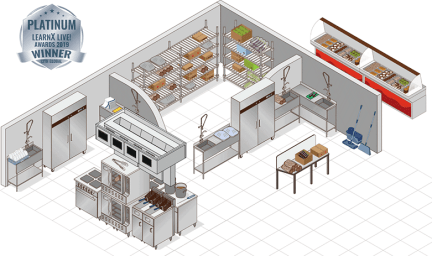
Food Safety in a Healthcare Setting
Course Description
Elderly clients are more vulnerable to food related illness, due to weaker immune systems. As a care worker it is your responsibility to ensure that you understand the causes of food related illness and the ways in which you can control the spread of bacteria.
The award winning course will discuss the following areas:
- What are high risks foods
- Safe food handling to avoid cross contamination
- Food allergens
- The temperature danger zone in which bacteria multiplies faster
- How to cool food and use a food thermometer
- The use of colour coded cutting boards
- Hand hygiene as the most basic prevention of the spread of bacteria
- The use of gloves
- Environmental hygiene including pest control
- Reporting poor food hygiene practices
Course Summary
In this course the following areas will be covered:
- What are high risks foods
- Safe food handling to avoid cross contamination
- Food allergens
- The temperature danger zone in which bacteria multiplies faster
- How to cool food and use a food thermometer
- The use of colour coded cutting boards
- Hand hygiene as the most basic prevention of the spread of bacteria
- The use of gloves
- Environmental hygiene including pest control
- Reporting poor food hygiene practices
Business Outcomes
The organisation will ensure that first and foremost that all clients are not exposed to illness resulting from poor food hygiene. All staff will have a solid understanding of how food bacteria multiplies and spreads so that they can employ best practices to reduce the spread of bacteria by using the correct equipment and carrying out the required levels of personal and environmental hygiene.
Learning Outcomes
Participants will be able to…
- Identify how bacteria and other contaminants are spread
- State why some food have a higher risk of bacteria
- Recognise and manage the conditions under which bacteria is transmitted and grows
- List at least five personal and environmental hygiene practices to reduce risk
- Report poor practices
This course was part of a suite that won a 2019 Platinum LearnX Live! Award.







